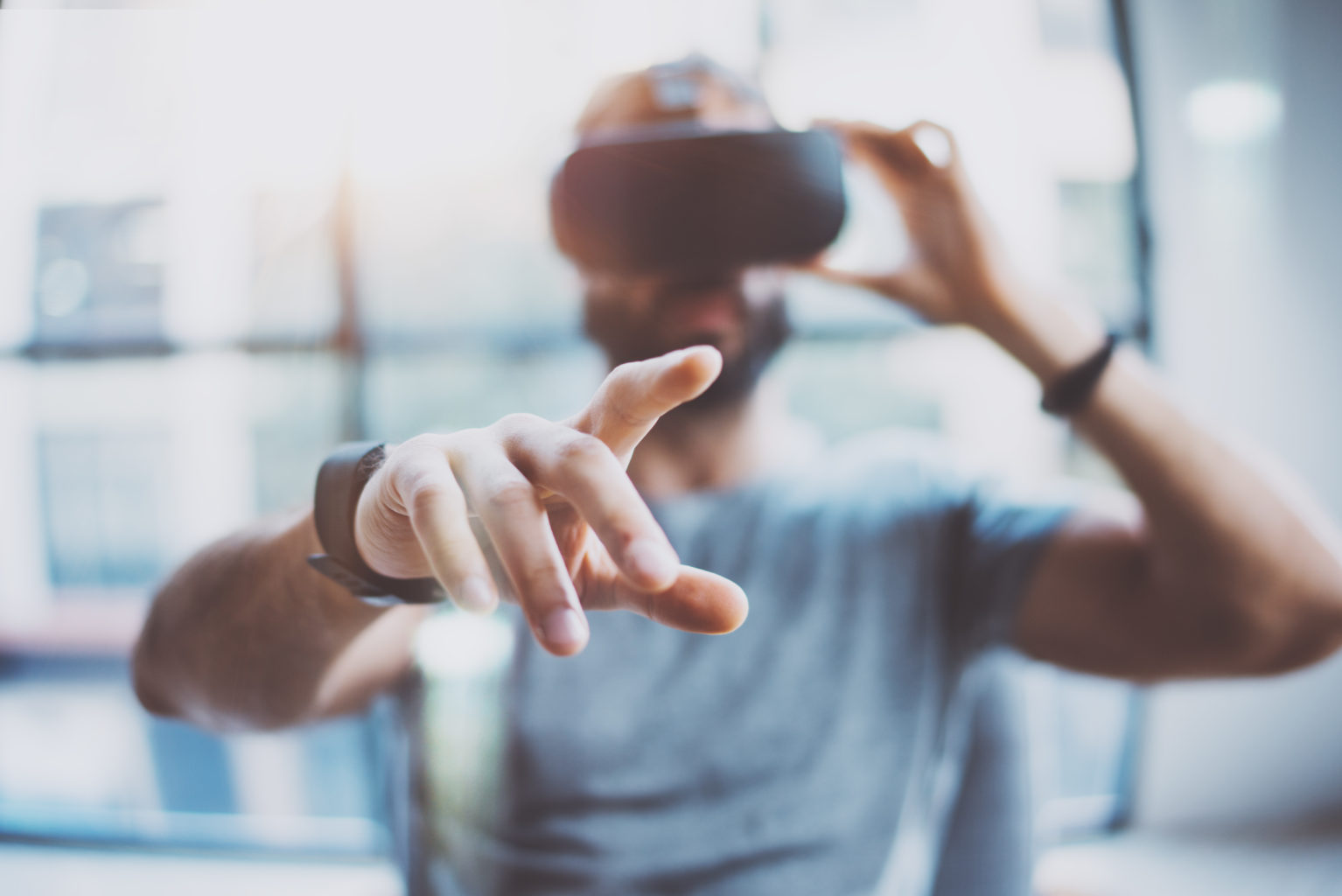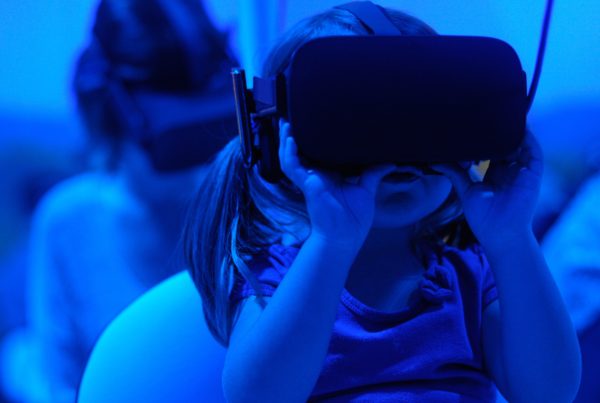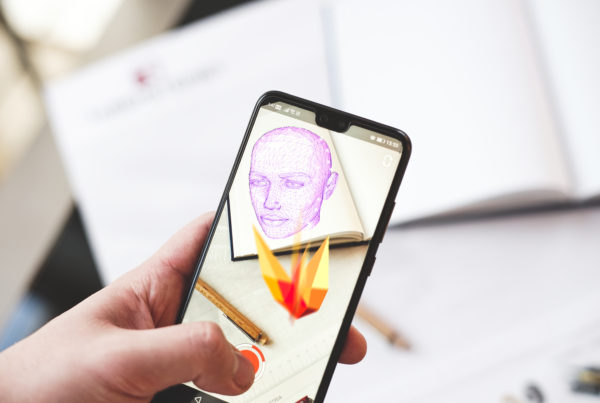Today’s marketing teams are seeing their customers’ attention pulled in more directions than ever, and across a growing number of digital channels. Consumers are exposed to up to 10,000 brand messages per day, and with an average attention span that has decreased to about 8 seconds, their interest and engagement are ever-scarcer resources.
Enter Virtual and Augmented Reality: immersive new mediums that could give companies a unique edge in reaching and engaging their audiences. A wide range of consumer-facing businesses — 30% of those in the Forbes Global 2000, in fact — are experimenting with VR/AR as part of their marketing efforts. Brands that are thoughtfully weaving high-quality VR/AR experiences into their multichannel roadmaps — serving up relevant, compelling content to the right people at the right times — are seeing exciting benefits.
However, VR/AR isn’t the right solution for every product, audience or context. Especially in this early stage, this content is generally time- and cost-intensive to create — and importantly, it requires more user effort than traditional mediums. Some enthusiastic teams, dazzled by the possibilities of VR/AR, are charging full speed ahead without sufficient planning… and unsurprisingly, many of them are seeing lackluster and potentially costlyresults.
3 Ways VR and AR can target your marketing goals
Making VR/AR an effective part of your marketing arsenal requires a clear and customized plan. What specific goals do you want your VR/AR content to accomplish, and how will you measure its success? When and why will your users will want to engage with such involved mediums? How will VR/AR will work in tandem with your other channels throughout the customer journey?
In this article, we’re focusing on VR/AR through the lens of three goals that are top of mind for today’s marketing teams — growing the top of the funnel, deepening user engagement, and increasing conversions — and how a smart, customer focused VR/AR strategy can help you achieve them.
1. Positioning and Growing Your Brand
Between its sheer newness and its immersive nature, VR/AR marketing content can establish you as an innovative brand with a fresh, compelling message to share.
Your goal:
To widen the top of your sales funnel by getting more eyes on your content, setting the stage for greater engagement, and eventually more conversions, down the road.
Why it works:
Today’s most sought-after customers, particularly millennials and Gen Z, are drawn to new and experimental technologies — so offering them branded content in VR and AR can be a powerful way to create a positive association with your business. Using these mediums positions you as a brand that’s in touch with the latest trends and technologies: in a recent survey, 71% of consumers said that VR makes a company seem “forward-thinking and modern,” and 52% say they’d like to be associated with these brands.
Who’s doing it:
The New York Times partnered with Google to create a VR experience called The Displaced, which follows three children uprooted by war in South Sudan, Eastern Ukraine and Syria. By bringing together world-class journalism and cutting edge technology, the Times simultaneously raised awareness for refugee issues (as we’ve discussed, VR can measurably increase empathetic emotions) and positioned itself as a pioneer in innovative reporting.
The first release was a huge success, driving over 6000,000 downloads and proving to an increasingly tech-savvy audience that this 150+ year-old brand is fresh and relevant. Online users can watch The Displaced on the NYT app, but the Times also mailed free Google Cardboard VR viewers to all domestic home delivery subscribers to further enhance the experience.
2. Bringing Your Content to Life
Storytelling is the driving concept behind today’s content marketing efforts — and what better way to draw a user into your narrative than a fully immersive experience like VR?
Your goal:
To stand out from the sea of digital content that’s inundating your customers’ feeds by creating a more personal and memorable connection with them.
Why it works:
If a picture is worth a thousand words, an interactive experience like VR is worth millions. In a recent study, users were presented with the same content in three different formats: 2D, 360-degree video on a flat surface, and 2D. VR generated a 17% higher emotional reaction than flat 360-degree video, and a 27% higher reaction than 2D; users also engaged with the VR content for 34% longer. Because these experiences target multiple senses and parts of the brain, VR/AR is emerging as an unprecedented way to tell a brand or product’s story — and place the customer at its center.
Who’s doing it:
In 2015, in collaboration with Samsung, Marriott Hotels launched an experimental initiative called VRoom Service. Upon request, Marriott guests are hand-delivered a Samsung Gear VR headset pre-loaded with “VR Postcards.” These “intimate and immersive travel stories” take users to destinations like Chile, Rwanda and Beijing, engulfing them in the vivid sights and sounds of these different places from the comfort of their hotel rooms.
Specifically targeting customers who have already demonstrated an interest in travel and who are already engaged with the Marriott brand — and placing the technology right in their hands, at just the right time — the company seized on a highly profitable opportunity. Requests for the “postcards” exceeded expectations, and 51% of VRoom Service users reported that they’d like to see more of this technology.
3. Increasing Buyer Confidence — and Conversions
VR and AR can demonstrate your products and services in an in-depth, realistic manner, enabling your customers to make more informed and confident purchasing decisions.
Your goal:
Now that the customer has engaged with your brand at multiple touchpoints, you want them to feel ready to make that final, all-important conversion.
Why it works:
No one likes to be surprised when they take their new purchase home or use it for the first time — and that’s one of the biggest reasons why VR and AR are becoming increasingly common in the retail world. VR/AR enables consumers to get up close and personal with your products, facilitating faster and more confident purchases. 33% of US shoppers say they would be more likely to buy from a retailer who incorporates VR, and 24% say that introducing VR makes it more appealing to shop online.
With a richer introduction to your product and whether it fits their needs, your customers are likelier to make the purchase — and remain happy with what they’ve bought.
Who’s doing it:
Lowe’s is leveraging VR and AR to spark its customers’ DIY spirits, and to empower them to choose the best purchases for their homes. Lowe’s Vision is an AR app that allows customers to “try out” potential furniture, fixtures and colors in their real homes, and their new VR offering, Holoroom, offers a virtual crash-course in bathroom remodeling set in a lifelike, interactive space.
With these tools, Lowe’s customers don’t have to rely on flat images or product reviews to make their buying decisions. They can interact with the companies’ products as they would in real life, adding value and trust to their shopping experience.
These are just a few of the ways that Virtual and Augmented Reality are making waves in the digital marketing space. Through trial, error and constant experimentation, industry leaders are honing in on the best ways to put these technologies to work for their brands and bottom lines.
How is your organization leveraging VR/AR technology in your multichannel marketing campaigns? Share in the comments.







